
|   |

|   |
Guru Deba Prasad Das: Guru of Global Orissi - Ashish Mohan Khokar, Bangalore e-mail: khokar1960@gmail.com Photos: Mohan Khokar Dance Collection November 6, 2010 If there is one Orissi guru, whose art (and thanks to whom Orissi) traversed the globe (USA in the 60s and Europe and Near East in the 70s) long before anyone else's, it was Guru Deba Prasad Das, the unsung pioneering global guru of Orissi. Unfortunately he died very young, on 16 July 1986, hence neither his students nor his style could get formidably established, but his prime disciples like Guru Durga Charan Ranbir and Ramli Ibrahim, Srinath Raut and Gajendra Panda and their students have taken the guru's style further, with selfless service and dedication to their guru. The third generation of younger dancers like Rahul Acharya, January Low and others hopefully will ensure the Guru Deba Prasad style lives long. It is a unique style and the flavor is very grounded. Guru Deba Prasad was born in 1932 in Kantapara, near Cuttack. His mother died when he was just two and his father, a police inspector, was from the nature of his duties, rarely at home. Deba Das was thus brought up by his grandfather who was attached to a Jatra party in the village, where he played the violin, and could also sing and mime. Watching him every day, Deba Prasad Das picked up all he could and enjoyed imitating him. When Deba Prasad was six, his father married again and came to stay in Puri. Here the boy was sent to school. Near the school was an akhada, in the charge of Mohan Chandra Mohapatra. Deba Prasad went to the akhada every day, to learn singing and dancing. This continued for six years, although he was not a regular akhada protégé. His father then got transferred to Behrampur. Realising that the boy's interest in singing and dancing was genuine, and that there was no chance of his developing this skill in Behrampur, his father, at the suggestion of his brother who knew Radha Raman Ray, the music director of New Theatres well, put him in that group. Deba Das was then 14. 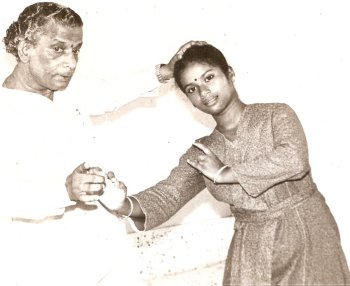 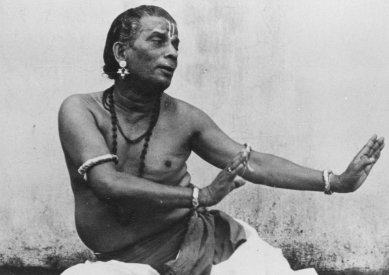 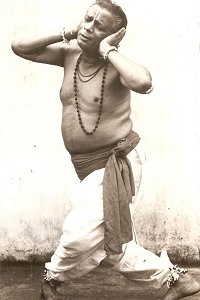 Later, Guru Pankaj Charan Das joined the New Theatres, where he himself danced and also composed dances. For sometime Deba Prasad's guru Mohan Mohaptara, the Goti pua master, also choreographed items. With this Deba Prasad got a chance to perform. Before the curtain rose on the drama every evening, the stage showed a large artificial lotus in bloom in the heart of which was seated a performer representing Goddess Saraswati. The role was taken by a young girl in the party, Nabina, and Deba Prasad came dressed as a girl, holding a lit oil lamp and with dance movements offered homage. This act became regular, no matter what the theme, so Deba had a role and his salary was raised to Rs.7! All this shows the hardships and hard work pioneering figures undertook to make the form. Today when their shishyas are flying here and there, they should not forget what sincere efforts their great gurus made. These great, pioneering gurus served dance and their muse, not individual egos or market. 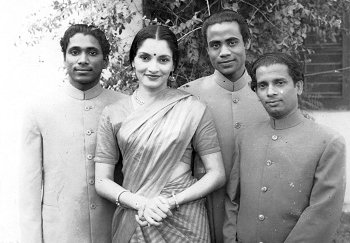 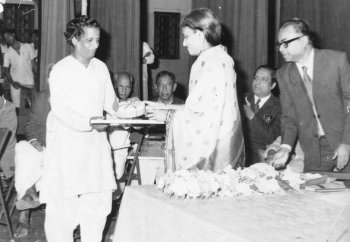 Pankaj Charan guru and Deba Prasad guru had their roots, no matter how tenuous, in tradition - represented by Mahari and goti pua traditions. They were both in New Theatres and then in Annapurna "B". Apart from composing, directing and performing dance, they were renowned and popular comedians also. When Orissi eventually emerged as a dance form that could stand on its own, it is to them that already established dancers of other styles wishing to take Orissi turned to - Yamini Krishnamurti and Ritha Devi to Pankaj guru and Indrani Rehman to Deba Das. This is a very important point in Orissi dance history. Then too, when a faculty of music and dance as part of the University was established in Orissa - the Utkal Sangeet Mahavidyalaya - these two were appointed for Orissi dance. What gave the two added stature was their link with the past, symbolised by the mahari tradition and the goti pua tradition; it is also this that drew many aspirants to them. That showed in their work: both showed simplicity of style, with no embellishments and harboured a positive hostility to any external influence. Although dance writers give credit to the 1958 Dance Seminar when Orissi got known and later established enough to be considered a classical form, it is actually Dec 1, 1957 that's the starting point! On this day, Indrani Rahman presented a demo by her guru Deba Das in Delhi in order to popularize the unknown dance style. Before that in the First Inter-University Youth Festival in 1954 held in Delhi, when both Priyambada Mohanty and Dhiren Patnaik had danced and presented Orissi, hardly any impact was made, so much so Dhiren da never tom-tommed it. But Priyambada did. In 1957 two developments took place that marked a turn in the growth of Orissi. One was the formation of Jayantika, first called Nikhala Utkala Nritya Shilpi Sangha, which writer-turned-activist-turned politician-turned Governor Lokanath Mishra found too ponderous and all agreed Jayantika was short and sweet! The name stuck. Second important development was the staging of Manini in Delhi, because this opened many doors to Orissi arriving centre stage. But that's another story! With Indrani's projection of her Guru Deba Das in 1957 at her residence, a show attended by connoisseurs like Kapila Vatsyayan, Mohan Khokar, Usha Bhagat, and Charles Fabri, all agreed this style had distinct flavor. These people were later also instrumental in according the form a pride of place nationally when the then Union Commerce Minister Nityanand Qunango (hailing from Orissa, hence his interest!) raised a question at the SNA 1958 seminar that how come the SNA did not accept Orissi as a style independent of Bharatanatyam. Since two of its key products, Sanjukta and Mayadhar Raut were studying Bharatanatyam in Kalakshetra then, the general opinion was they were not confident of Orissi as a style and thus were learning Bharatanatyam to enhance it. Mayadhar's later contribution to bringing in usage of sancharis in Orissi is attributed as a direct outcome of his years of learning Bharatanatyam. Ten weeks later, on Feb 19 and 20, 1958, Indrani made her debut in Orissi. The performance was sponsored by Little Theatre Group and this was the first time a full evening of Orissi (of Deba style or any other) was seen outside of Orissa. Around that time Indrani's fortuitous selection as Miss India also added to her name and to Orissi's fortune! Deba Das thus took Orissi out of its limited setting and made it national and soon his partnership with Indrani made it international. No wonder today, when one sees Malaysian wonder dancer Ramli Ibrahim, one can see what a pioneering guru he had. Thanks to Gurus like Srinath Raut's work in Delhi (main shishya Jyoti Shrivastav), Durga Charan Ranbir's fine and focussed training (main shishya now Rahul Acharya), Sudhakar Sahu, and continuance of younger gurus like Gajendra Panda (main shishya Suchismita Sahu), the Deba Prasad style is safe and secure and international. The guru did not benefit much, nor his family, but the guru's name will always live in history. With affection.  Ashish Mohan Khokar has made writing and recording dance history his mission. As a merit-lister in M.A. History from the Delhi University, he loves the process and technique of writing history and its reconstruction. He is the most sought-after biographer because of this and his 30 years of direct dance writing, with 35 published titles to credit, makes him India's reputed dance historian. With practical background in dance and theory, his opinions are much sought after and respected. He wrote as dance columnist for many magazines like India Today, First City and Life Positive. He was the dance critic of the Times of India in Delhi, then Bangalore, before starting his own dance journal - attendance - now in its 12th year of publication. As India's pioneering arts administrator way back in mid-eighties, he served the Delhi State Akademi and the Festivals of India in France, Sweden, Germany and China and worked as one of the Directors at INTACH, under PM, Rajiv Gandhi's chairmanship. He is currently on many committees and boards, nationally and internationally. attendance-india.com ; dancearchivesofindia.com |